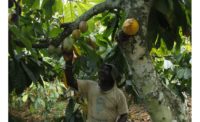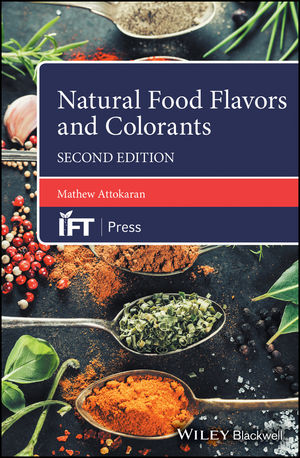It was Wednesday morning, just after 9 a.m. Dogpatch, as the neighborhood located on the eastern side of San Francisco near the waterfront is known, was just stirring. The door to The Lab was wide open, a kind of welcome back gesture I wistfully assumed.
It had been more than 10 years since Candy Industry Magazine visited Michael and Jacky Recchiuti of Recchiuti Confections, the article having appeared in our January 2004 issue. The former pastry chef and his wife had already established a reputation for fusing flavors into chocolate and then transforming them into visual and sensual delights.
It was good to see that chocolate artistry hadn’t really changed Michael Recchiuti; this editor showing more signs of wear and tear than the chocolatier. But despite his success and renown, Recchuiti remained as approachable as ever, offering a freshly brewed cappuccino as we sat down and chatted about his evolution as a chocolatier and his return to past culinary roots.
One of the first significant changes was The Lab itself, a former Recchuiti dessert café site (The Chocolate Lab) that turned into a full-fledged restaurant and now is only a custom events locale. Having always relied on his pastry training and experience to enhance his line of confections, Recchuiti had long sought to offer loyal customers the opportunity to sample both.
In 2012, when a former restaurant site opened in Dogpatch, three blocks away from the company’s main production site and just several doors from his second retail site, Little Nib, there was no hesitation on Recchuiti’s part to fill the space. Initially conceived as just a dessert café, the concept evolved to include tartines, cheeses and meats in order to meet city beer and wine license requirements.
The beaker symbol for the café reflected Recchuiti’s desire to have a place to experiment as well as educate, allowing for such taste happenings as chocolate and pastry flights. Early success led to expanding the concept into a full-fledged restaurant, which also earned community and foodie support.
However, it proved a bit complicated, beginning with staffing and continuing with complying with city restaurant codes. The changes necessary for a full-service restaurant ended up being too cost-prohibitive for Recchuiti, so he and Jacky opted out. In place, the two decided to shift toward a special events venue, one that featured tasting dinners that involved “partnering with culinary compatriots who have like-minded philosophies in creating food that’s innovative, daring with humor. This shared passion completes our evolution and helps realize our journey in finding the right formula of our cozy space of the Lab.”
Recchiuti then showed me the menu of his upcoming tasting dinner, which involved collaborating with Jesse Freidman of Almanac Beer Co. Items such as Ahi Tuna Belly Grissini, Wild Mushroom Ravioli, and Braised Duck headed up the savory portion of the menu. For desserts, there was a Strawberry Terrine, Roasted Pumpkin Souffle and The Lab Chocolate Cake.
He then took out an illustrated sheet that provided details on how to prepare and plate each dish, all instructions and diagrams coming from Recchiuti’s hand. As he explains, cooking provides a bit more leeway in the preparation and process.
“In pastries, the parameters are much more finite,” he says. “You have to understand temperatures, viscosities, textures; you work with emulsions based on fats and water.”
Moreover, the ability to create specific menus focused on pairings or local suppliers ignites the creative spark in Recchuiti.
“I never settle, which drives people crazy,” Recchuiti asserts. “I have a difficult time being comfortable, so I throw myself into uncomfortable situations.”
Even after he’s outlined the themed dinner for 25 people and done a practice run, Recchuiti will not hesitate in further tweaking the concept until and through the very night of the event. It can prove inspirational, which allows him to transfer concepts and themes into his confectionery business.
For example, when asked to prepare a chocolate macaroon, Recchuiti immediately felt the need to revise the classic recipe. Typically, chocolate macaroons will have 20 grams of cocoa powder and 200 grams of sugar.
“When you use cocoa powder, the macaroons taste like cocoa powder. So I eliminated the almonds [and cocoa powder] and replaced it with 250 grams of cocoa nibs,” he explains. “As a result, there’s an intense chocolate flavor. In addition, the texture’s a bit different. “
Unveiled at a chocolate demonstration sponsored by Valhrona — Recchuiti is an ambassador for the French chocolate supplier — the macaroons proved to be an instant success. Their short shelf life, however, precluded him from offering the item in his two retail stores (Ferry Tower and Little Nib) or other retail outlets, a network of 350 stores.
Nonetheless, that didn’t stop Recchuiti from drawing inspiration from his culinary adventures and transferring it to his chocolate business, which has grown steadily. Back in 2004, the Recchiuti Confections production facility in Dogpatch occupied 6,000 sq. ft. Today, it’s double that.
“Initially, we occupied four rooms next to each other,” he explains. “Fortunately, we were able to grow and acquire adjoining space, knocking out walls when we had to. And today, we have about 45 people working for us, both in the factory and in our retail shops.”
Although Recchuiti does embrace automation — the chocolatier is very much hands-on, more than willing to change out a motor at a drop of a wrench — he understands what artisanal products are all about.
Hence, there’s plenty of hand work involved, be it with the company’s popular S’mores Bites, which feature homemade marshmallow and graham crackers, to classics such as his star anise and pink peppercorn, as well as tarragon and candied grapefruit peel truffles.
“We actually purchase the tarragon from the farmer, wash it and dry it ourselves. Afterwards, we freeze it. This way we know exactly the quality of the ingredient. Or when we use Kona coffee, we‘ll call the plantation and tell them to roast it to our specs. It’s then shipped to us in 5-lb. bags. I guess we’re just control freaks.”
That kind of attention to detail has helped propel Recchuiti forward, albeit in a “controlled” manner. Today, revenues have quintupled since Candy Industry Magazine visited him a decade ago. The mix of the business has also changed, with internet sales accounting for about 20 percent of all revenues and retail accounting for the major portion of the remainder.
Back then, the company used to have a good number of wholesale and corporate accounts, Recchuiti acknowledges. The Great Recession of 2008, however, shrunk those considerably, although he does see a gradual return.
In addition to offering his celebrated selection of truffles, Recchuiti has also expanded to panned products and bars.
“We have four industrial–sized pans, which is a bit unusual for an organization as small as ours,” he says. “But when I was apprenticing at Cocoa Barry in Pennsauken, N.J., back in the early 1980s, I learned how to pan. You can really produce some great confectionery products with panning, although it’s difficult to convince consumers to pay a premium price. There isn’t that tradition of dragees as there is in Europe.
For example, Recchuiti’s dragee sampler contains Burnt Caramel Almonds, Burnt Caramel Hazelnuts, Peanut Butter Pearls and Cherries Two Ways, which retails for $29 for a 12-oz. box.
With regards to bars, the company features Bittersweet, Semisweet, Dark Milk and Feve (The French word for a roasted cocoa nib) varieties. It does produces several specialty items featuring inclusions such as the Orchard bar (currants, mulberries and toast almonds coated in burnt caramel syrup with sea salt) and Sesame Nougatine, which features toasted sesame seeds cooked with cane sugar and sea salt to create a nougatine.
And while Recchuiti acknowledges the popularity and explosion of bean-to-bar operations in the United States, he has opted to rely on premium chocolate suppliers, such as Valhrona and Guittard, for his chocolate needs.
“We have two custom blends from Valhrona, a 64 percent dark chocolate and a 55 percent milk chocolate. These are specially made for us. In addition, we get our single-origin chocolate from Guittard. It’s just easier to control the quality.”
Of course, the company emphasizes seasonal offerings as well. This fall, consumers can opt for Caramelized Pumpkin Seed Mendiants or Fruit Faves, a trio of chocolate-covered Key Lime Apple, Key Line Pear and Candied Orange Peel.
And what’s down the road for Recchuiti Confections? Well, the company is considering a third retail location. Exports are also a possibility. The key, however, remains Recchuiti’s commitment to creative confections.
“We’re really driven by flavor,’ he says, regardless of where that road takes them.
Related:
Raaka Chocolates
Dandelion Chocolate














